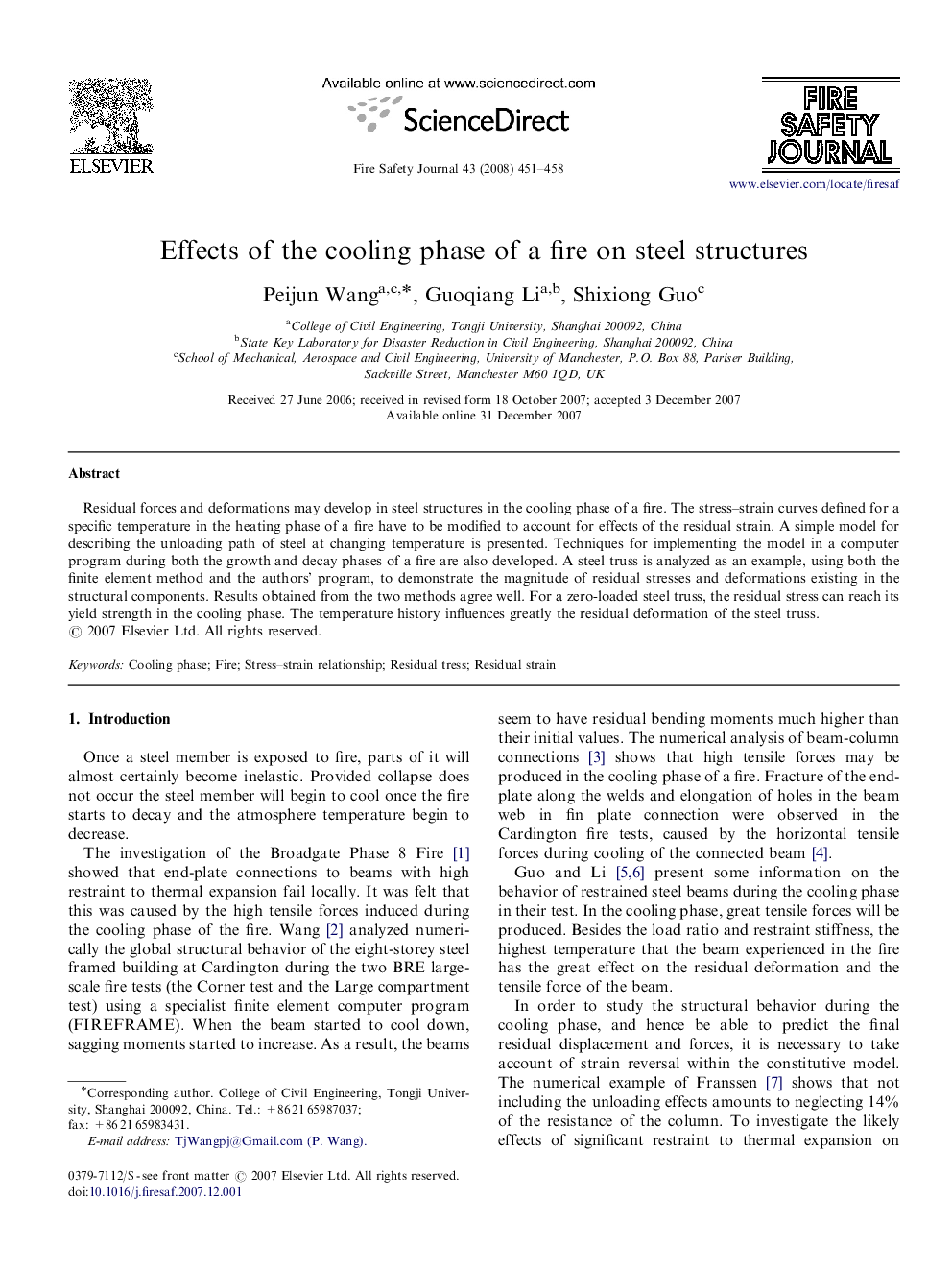| Article ID | Journal | Published Year | Pages | File Type |
|---|---|---|---|---|
| 270552 | Fire Safety Journal | 2008 | 8 Pages |
Residual forces and deformations may develop in steel structures in the cooling phase of a fire. The stress–strain curves defined for a specific temperature in the heating phase of a fire have to be modified to account for effects of the residual strain. A simple model for describing the unloading path of steel at changing temperature is presented. Techniques for implementing the model in a computer program during both the growth and decay phases of a fire are also developed. A steel truss is analyzed as an example, using both the finite element method and the authors’ program, to demonstrate the magnitude of residual stresses and deformations existing in the structural components. Results obtained from the two methods agree well. For a zero-loaded steel truss, the residual stress can reach its yield strength in the cooling phase. The temperature history influences greatly the residual deformation of the steel truss.
